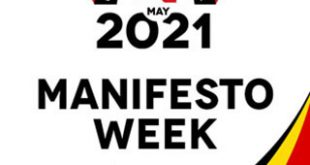
Kampala, Uganda | THE INDEPENDENT | A Danish-based biochemical company, Eye-Grain ApS has developed a solution that is aimed at removing aflatoxins and related toxins from maize and other grain in Uganda.
Aflatoxins result from moulding on grain caused by poor storage of foodstuffs in warm and humid conditions, and to a lesser extent, planting of affected seeds. In the process, the grain us contaminated with poisonous compounds known as Mycotoxins.
But according to Peer Hansen, the Director of Sales and Marketing Eye-Grain ApS, the new solution, Toxi-Scrub cleans the infested grain like maize, sorghum and wheat. It involves a grain-washing machine and a chemical, known as ozone, which effectively scrubs and cleans the affected seed, but also penetrates the seed to kill the fungus that has penetrated it.
Hansen says that the treatment is designed to bring the contamination below allowed regulatory levels. “It is an advantage that the TOXI-SCRUB will eliminate not only Mycotoxins but other biologic activity as well, including insects, fungus, bacteria and mites, among other pests,” says Peer Hansen.
The product was unveiled amidst a brief ban on Ugandan maize by Kenya over a week ago, which shook the local grain industry with mixed reactions. Kenyan authorities said that grain from Uganda had high levels of mycotoxins.
Hansen says His 10-year research and trial has resulted in the production of the first solution that eliminates mycotoxins from grain, including aflatoxin, which is said to cause liver cancer in humans.
He assures users that the solution does not use any pesticides, although it can repel various pests simultaneously. The technology that they have tested in Europe is capable of cleaning or treating two to 40 metric tons of grain per hour, which may make it a bit too expensive for most of Uganda’s maize farmers.
Hansen says the smaller two-ton processors, which would be convenient for the Ugandan farmers, are costlier to use than the bigger ones. The first machine to be installed in Uganda will be able to process eight tons per hour. The machine is expected to cost between USD 3 to USD 6 (11,000 to 22,000 Shillings) per tonne.
However, the solution is to install a machine for communities, so that they can be able to process more grain in a short time which therefore become more cost-effective.
The first machine is expected to be installed in the country by August, though Hansen says this could come earlier if the common factors like regulation, that usually affect project implementation in Uganda does not come into play. He says in other countries in Europe, the solution is already being used.
But Hansen says the development of these technologies should not make the farmers and processors relax on the other measures of upholding standards, because the new technologies might not be enough. This is because many Ugandans eat what they produce and these might not have to be taken for the cleaning process, hence posing a risk to the consumers.
Last year, the International Institute of Tropical Agriculture and the National Agriculture Research Organisation launched a 4-year project to develop Aflasafe, a naturally developed product that is described as safe and effective for the management of aflatoxin in grain and cereals.
********
URN
 The Independent Uganda: You get the Truth we Pay the Price
The Independent Uganda: You get the Truth we Pay the Price



From the plantation to the store, to the compound, to the maize mill, to sacks and consumptiom; an ordinary Ugandan stands a chance of getting the maize contaminated with mycotoxins
(They harvest mill and eat)
even groups who have attempted to attend to problems get stuck
there should be an effort by the Centre to get back to the old system and effectively control the entire process; this includes motivation for the primary producer-pay the good price (the one thry should be informed about (official)
this is what used to happen in Uganda
the institutions and commercial food sources should only buy maize flour (and others related) from certified sources